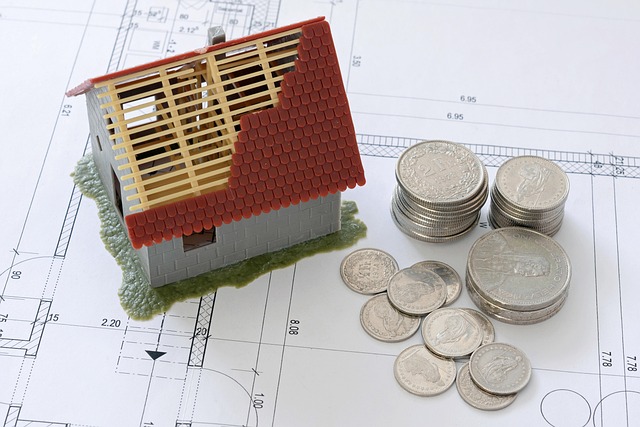Finding Hidden Value in Forgotten Properties Across the UK
Forgotten properties represent both challenges and opportunities across the UK property landscape. These neglected buildings, often in various states of disrepair, can offer significant investment potential for those willing to navigate the complex legal and financial considerations involved in their acquisition and renovation.

Forgotten and vacant properties dot the British landscape, from rural villages to urban centers, representing lost potential and untold histories. While these buildings may appear as eyesores to some, they increasingly attract attention from investors, first-time buyers, and community developers seeking affordable housing solutions in a challenging market. Understanding how to identify, acquire, and transform these properties requires knowledge of specific legal frameworks, funding options, and renovation approaches unique to the UK property system.
Discovering Hidden Value in Abandoned Houses in the UK
Abandoned properties often represent untapped potential in the UK housing market. These forgotten buildings frequently sell below market value, sometimes at 30-40% less than comparable inhabited homes. The value proposition extends beyond mere price—many abandoned houses occupy prime locations that would otherwise be unaffordable for many buyers. Victorian terraces in gentrifying urban areas, rural cottages with land attached, and even historic buildings with architectural significance all regularly appear on the abandoned property market.
However, realizing this hidden value requires careful assessment. Structural surveys are essential, as abandoned properties often suffer from issues like damp, subsidence, or roof damage that can significantly impact renovation costs. The property’s history also matters—understanding why it was abandoned can reveal potential complications with title deeds, boundary disputes, or planning restrictions that might affect future value.
Effective Methods to Find Abandoned Houses for Sale in the UK
Locating abandoned properties requires strategic approaches beyond standard property listings. Local authority empty homes registers provide an official starting point, as councils maintain records of long-term vacant properties. These registers sometimes include properties where the council is actively seeking new owners to bring buildings back into use.
Auctions represent another fruitful avenue, with many abandoned properties appearing in property auction catalogues after repossession or probate sales. Companies like Allsop, SDL Auctions, and Auction House regularly feature such properties, often at significantly reduced guide prices. For a more direct approach, letter campaigns in target areas can sometimes uncover owners willing to sell abandoned properties before they reach the open market.
Online resources have also emerged specifically for this niche. Websites like Empty Homes UK, Property Rescues, and specialized sections on Rightmove and Zoopla allow searches filtered for properties requiring renovation or those that have been unoccupied for extended periods.
Making Home Improvements Affordable: UK Funding for Abandoned Properties
Renovating abandoned houses often requires substantial capital, but various funding schemes exist to make these projects more financially viable. The Empty Homes Community Grants Programme provides funding to community organizations seeking to renovate abandoned properties for affordable housing. Individual buyers can explore VAT reduction schemes, as renovations of properties empty for over two years may qualify for reduced VAT rates on certain materials and services.
Local authority loans and grants vary by region but often target abandoned property renovation. For example, some councils offer Empty Property Grants of up to £20,000 to help owners bring long-term vacant properties back into use. These typically come with conditions regarding future occupancy or rental arrangements.
Private finance options have also evolved to accommodate abandoned property projects. Specialist renovation mortgages from lenders like Ecology Building Society and BuildStore offer staged payment releases that align with renovation milestones, addressing the challenge that traditional mortgages present when properties are deemed uninhabitable.
A Guide to Legal and Financial Aspects of Abandoned Homes in the UK
Navigating the legal landscape surrounding abandoned properties requires careful attention to several key areas. Establishing clear ownership is paramount, as abandoned properties often have complicated title histories. Full title searches through the Land Registry are essential, potentially revealing restrictive covenants, easements, or other legal constraints that could affect development plans.
Planning permission represents another crucial consideration, particularly for properties that have been empty for extended periods or require significant structural changes. Local planning departments may have specific policies regarding abandoned buildings, especially those in conservation areas or with historical significance.
Tax implications also warrant attention. While renovating abandoned properties can offer certain tax advantages, such as potential Stamp Duty Land Tax relief on derelict properties, owners may face higher council tax rates on long-term empty properties—a measure designed to discourage property abandonment.
Understanding Affordable Abandoned Houses in the UK Market
The market for abandoned houses varies significantly across UK regions, with price points and renovation costs differing accordingly. Urban abandoned properties in areas like Manchester, Liverpool, and parts of London often present lower initial purchase costs but higher renovation expenses due to complex structural issues and strict planning requirements. Rural abandoned properties may offer more space and land but can present challenges regarding utilities connections and access.
| Region | Average Purchase Price Range | Typical Renovation Cost Range | Total Investment |
|---|---|---|---|
| North England | £40,000 - £80,000 | £30,000 - £60,000 | £70,000 - £140,000 |
| Midlands | £60,000 - £120,000 | £40,000 - £70,000 | £100,000 - £190,000 |
| South England | £100,000 - £250,000 | £50,000 - £100,000 | £150,000 - £350,000 |
| Wales | £50,000 - £90,000 | £35,000 - £65,000 | £85,000 - £155,000 |
| Scotland | £45,000 - £100,000 | £30,000 - £70,000 | £75,000 - £170,000 |
Prices, rates, or cost estimates mentioned in this article are based on the latest available information but may change over time. Independent research is advised before making financial decisions.
Affordability varies based on location and property condition, but abandoned houses typically offer entry points into property markets that would otherwise be inaccessible to many buyers. Government initiatives like the First Homes scheme can sometimes be applied to abandoned property purchases, providing discounts of 30-50% on market value for eligible first-time buyers committed to renovation projects.
The investment potential of abandoned houses depends largely on location trends and development plans. Properties in areas with improving infrastructure, new transport links, or urban regeneration programs often present the strongest potential for value appreciation following renovation.
Forgotten properties represent a unique segment of the UK property market that continues to offer opportunities despite broader housing market fluctuations. While these properties present significant challenges—from legal complexities to substantial renovation requirements—they also offer pathways to affordable homeownership and potentially lucrative investments. Success in this niche requires thorough research, careful financial planning, and realistic assessment of renovation capabilities, but for those prepared to undertake the journey, abandoned buildings can transform from forgotten structures into valuable homes once again.



